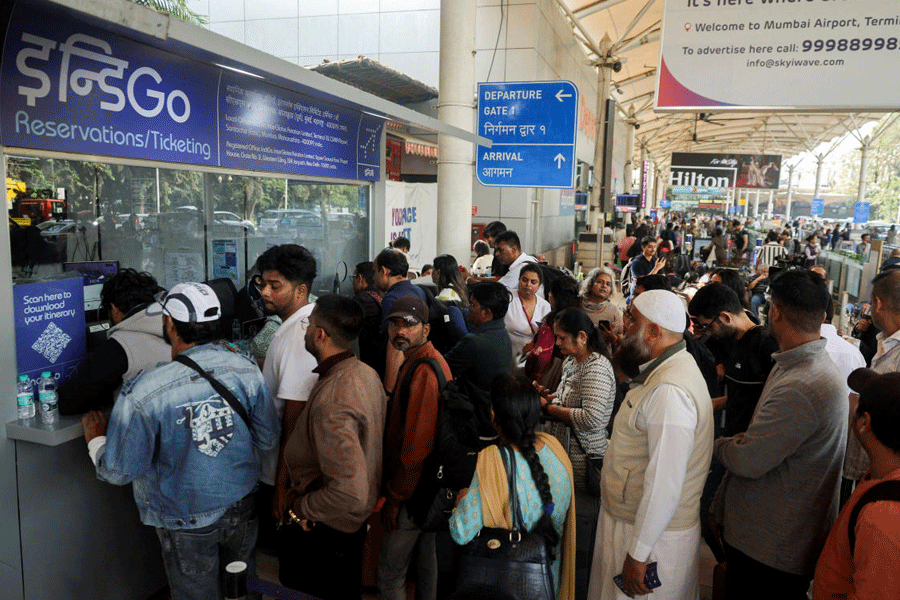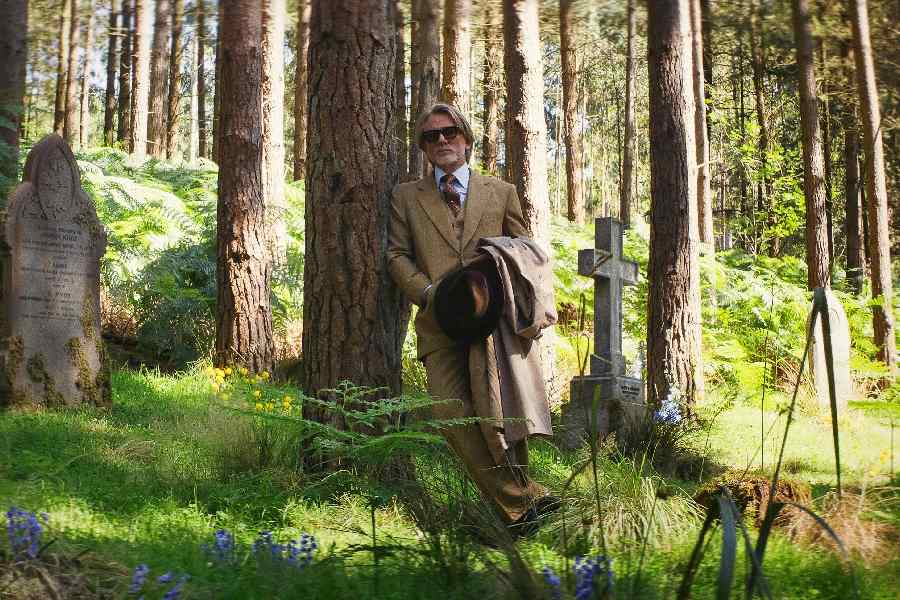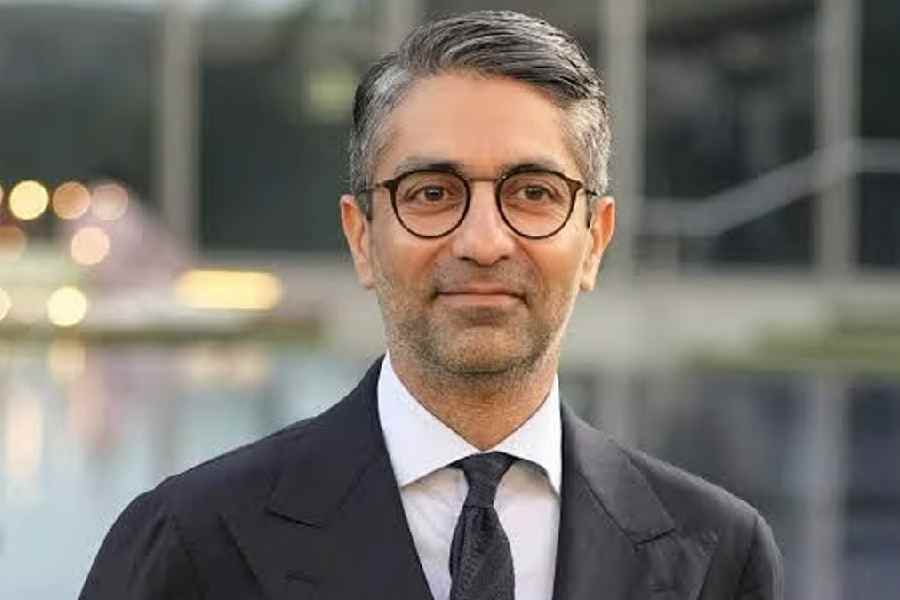 |
 |
 |
 |
| OF MEN AND MAIL: ( From top) Nimai Chatterji; a part of his collection with Tate Gallery; Tagore and Russell |
When the police broke down the door of his flat on January 18, Nimai Chatterji was sitting in his armchair, surrounded by the letters he had written to poets, authors, artists and philosophers. The gas fire was still burning. He had been dead for nearly four weeks.
Few residents of the apartment block in Golders Green in North West London knew that the frail Bengali man living there by himself had a treasure trove of original letters and manuscripts. He had been a recluse for the last three years of his life, and died alone in the apartment.
Friends in Calcutta had issued an alert when Chatterji, 79, failed to answer his phone for several days. The post-mortem described the cause of death as bronchio-pneumonia. Ever since his wife, Joya, died in 2007, he had become lonely and depressed, his friends say.
Literary observer, poet, critic and passionate collector, Chatterji had the biggest collection of letters by leading twentieth century writers, including Bertrand Russell, T.S. Eliot, Henry Miller, Boris Pasternak, Jean Cocteau, Anna Akhmatova and Martin Heidegger. He also had one of the largest collections of avant garde art from the post-World War II era including art books, letters, postcards, badges and art objects, which the Tate Gallery in London acquired for £5,00,000 (about Rs 3.67 crore).
Scattered among the papers in his flat were letters addressed to him. He had started collecting them when he was a producer in the BBC Bengali service. In the late Fifties, Chatterji wrote to writers and philosophers in the West asking for their views or reminiscences of Rabindranath Tagore. He had planned to publish a volume of the impressions of Tagore in the West to coincide with the poet’s birth centenary in 1961. However, it remained unpublished.
“There are 2,500 letters written to Chatterji by the great writers of the twentieth century,” says Chatterji’s long-time friend, poet Sankha Ghosh. “It is a treasure trove.” Over the last decade Ghosh, economist Amartya Sen and other friends of Chatterji had been urging him to publish them.
“He told me recently that he had nearly finished organising the letters, but it is tragic that he died before submitting them,” said Ghosh.
One of the letters on Tagore was from British philosopher Bertrand Russell. Dated February 16, 1963, Russell describes his first meeting with Tagore when he was brought to his house by poet Robert Trevelyan and historian Lowes Dickinson. “I confess that his mystic air did not attract me and I recollect wishing he would be more direct. He had a soft, rather elusive, manner which led one to feel that straightforward exchange or communication from which he would shy away. His intensity was impaired by his self-asorbtion [absorption]. Naturally, his mystic views were by way of dicta and it was not possible to reason about them.”
In another letter, dated April 26, 1967, Russell was even sharper in his criticism of Tagore: “His talk about the infinite is vague nonsense. The sort of language that is admired by many Indians unfortunately does not mean anything at all.”
Chatterji exchanged letters with the poet T.S. Eliot on his phrase “objective correlative” and his views on Indian philosophers. Eliot wrote to him: “It is a great many years since I coined, as I thought, the phrase ‘objective correlative’. ... It is a little difficult to say positively, one way or another, whether what I meant some 35 years ago by the phrase corresponds to the analysis of the author of Vibhava. ...I must confess that I am neither quite sure of what I meant 35 years ago, nor sure of what the Sanskrit philosopher meant a good deal longer ago than that.”
The police found two wills in Chatterji’s apartment — one for his possessions in England and the other for those in India. His material possessions, including the archive of letters, have been left to the Bangiya Sahitya Parishad.
After studying Bengali literature at Calcutta’s Presidency College, Chatterjee went to Santiniketan for his MA. He moved to London shortly after and joined the BBC Bengali Service where he worked for 27 years. Later he became a life-long consultant and honourary curator at Tate Modern.
“I had got to know Nimai and Joya in 1998,” said Adrian Glew, archivist at Tate Gallery who showed me the collections. “We started discussing the acquisition and finally acquired it in 2008. His flat was stacked from floor to ceiling with the objects he had collected over the years. It is the most incredible collection, particularly valuable for the history of avant garde art. We are still organising the collections and there is more that we have to bring in. It will take two people two years to catalogue it.”
The Nimai Chatterji collection at the Tate fills more than 300 large boxes. There are over 2,50,000 objects related to avant garde art and the underground art movement. Chatterji acquired works from the Fluxus movement which emerged in New York in the Sixties and moved to Europe, and eventually to Japan (one of its main practitioners today is John Lennon’s widow, Yoko Ono).
Stacked in the boxes were works by artists such as Armand Fernandezs Arman and Marcel Duchamp, periodicals, catalogues, programmes, documents about the Letterists (the Paris-based collective of radical artists of 1952-57) and the Situationists (international revolutionaries who believed in Marx and avant garde art, based in Paris around 1957), contemporary music, recordings of Eliot reciting his poetry, videos of arts subjects and manuscripts of original letters written to artists. There were postcards and badges and vinyl records. In one of the boxes was a green silk sari belonging to his wife, a touchingly personal item given by a very private man.
“It is the biggest collection of avant garde art in Britain,” says Glew. “This collection now puts us on the same level with the other big museums which have avant garde artwork like the Getty Centre, Pompidou Centre and the State Gallery at Stuttgart. It is an enormously valuable collection for the history of art. The best thing is that everything has been kept in such pristine order.”
Glew hopes that he will one day be able to hold a special exhibition of the collections. At the moment they are taking up entire rows of the Tate archives. In Calcutta too, Sankha Ghosh hopes that the letters to Chatterji can be published one day.
For the moment, however, the coroner is contacting the executors of Chatterji’s will. His body has not yet been released and the letters still lie in limbo in the apartment. It will be a while before the world gets to see them in print.










